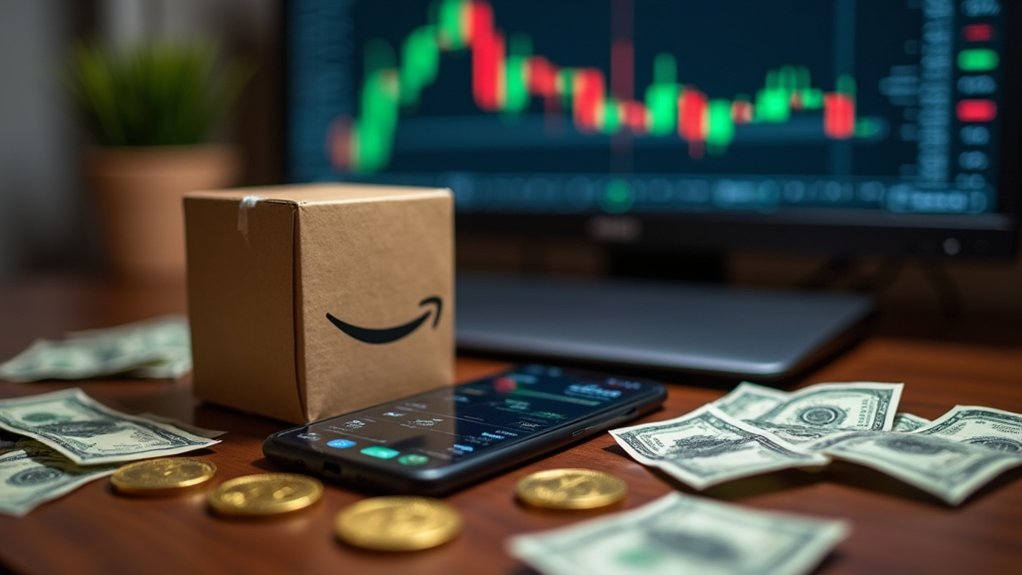While traditional stock trading has long operated within the relatively predictable confines of established exchanges, the emergence of cryptocurrency platforms offering Amazon stock trading introduces a peculiar hybrid that amplifies an already volatile asset’s inherent risks.
Amazon’s current volatility sits at 27.66% as of June 2025—a figure that would make even seasoned traders pause. When transplanted onto cryptocurrency platforms, this volatility becomes exponentially more dangerous, potentially triggering price swings approaching 300%. The mathematics are brutally simple: crypto platforms typically offer leverage ratios that traditional brokerages would consider reckless, transforming modest fluctuations into portfolio-destroying events.
The macro environment further complicates this precarious equation. Inflation pressures and tariff uncertainties already weigh heavily on Amazon’s fundamentals, affecting everything from consumer purchasing power to the company’s import costs. These traditional risk factors become magnified when filtered through crypto market dynamics, where regulatory uncertainty and technological vulnerabilities create additional layers of instability. The Consumer Price Index rose 2.7% year-over-year in June 2025, adding further pressure to Amazon’s already challenging operating environment.
Consider the liquidity differentials: while Amazon trades with robust volume on established exchanges, crypto platforms often exhibit erratic liquidity patterns that can exacerbate price movements during stress periods. A routine earnings miss that might trigger a 5% decline on NASDAQ could spiral into a 15% drop on a crypto platform, amplified by forced liquidations and panic selling.
Options traders seeking to hedge their exposure face another conundrum. Traditional hedging strategies rely on predictable implied volatility calculations, but crypto platforms introduce variables that render conventional risk management models obsolete. The very instruments designed to mitigate risk become unreliable when operating outside their intended ecosystem.
Perhaps most concerning is the security infrastructure. Amazon’s diversified business model—spanning e-commerce, cloud services, and logistics—typically provides some insulation against sector-specific shocks. However, this natural diversification becomes irrelevant when trading occurs on platforms vulnerable to technical failures, regulatory crackdowns, or security breaches. Within the broader Retail – Cyclical sector, Amazon’s volatility position reveals how price swings around its mean create additional complexity for crypto platform traders.
The allure of potentially massive returns inevitably attracts risk-seeking traders, but the mathematics suggest that for every success story, numerous portfolios face catastrophic losses. Even experienced traders who utilize dollar-cost averaging strategies may find their systematic approach disrupted by the extreme volatility and unpredictable liquidity patterns inherent in crypto-based stock trading. The question isn’t whether these extreme price swings will occur, but rather how many traders will survive them when they inevitably do.







